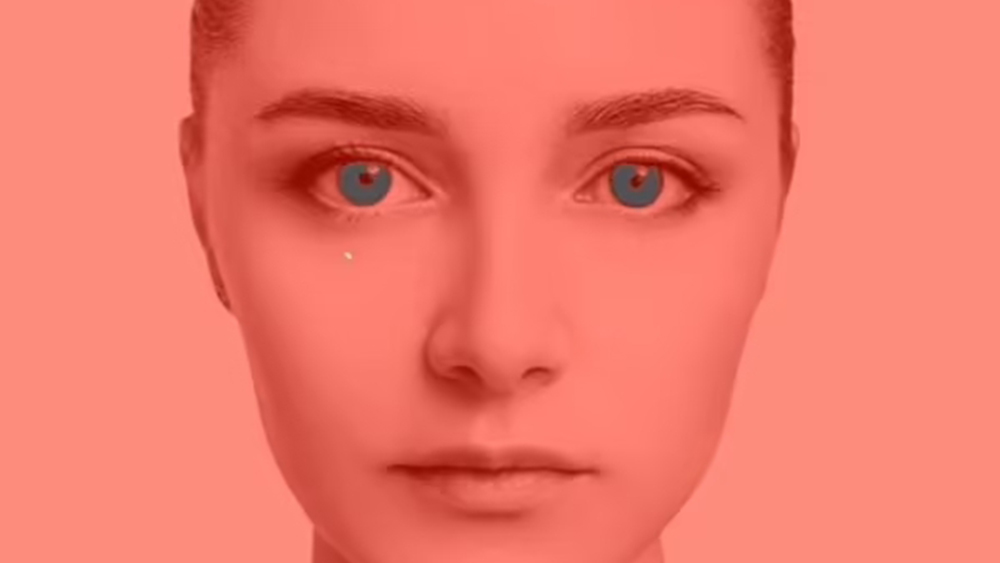
Optical illusions can sometimes trick us into seeing things that aren't there, including colour, and this example has taken TikTok by storm. If you look at the image above and think the woman's eyes are blue, you would be right – apparently, the woman does actually have blue eyes. But they're not blue in the picture.
It turns out that the image is a black-and-white photograph with a red filter placed over it, so there should definitely not be any blue there. And yet that's what most people see (see our pick of the best optical illusions for more head spinners).
@beatonthebeeb ♬ original sound - Dean Jackson
The TikTokker Dean Jackson is well known on TikTok for sharing mind-boggling optical illusions. In this latest mind-boggler, he asks us to look at a photograph of a woman that has a red filter over it and to decide what could her eyes are. Most people think they're a dark turquoise blue, but when the red filter is removed, we see that the photo is black and white.
Jackson's theory is that our brains are trying to help us but inadvertently trick us in the process. "Your brain detects the pigment – the grey area around the pupil – and it assumes that the red filter has trapped the blue light, so it tries to help you out, as your brain should, by putting the blue colour back into the picture for you, and your brain is completely misleading you in the process."
The back of the human eye contains two types of photoreceptor cells that respond to light: rods and cones. Rods detect motion and aid our night vision while cones detect colour. The three kinds of cone cells are each more sensitive to either red, green or blue. As a red filter only lets through red light, other colours should appear as grey or black, including green and blue. But if our brain recognises the context of the image and believes it should be blue, it can end up seeing the grey light as blue
The optical illusion is so strong that some viewers think it must be a trick and that the image has been changed. Even zooming in on it, most people continue to see blue, but when we've checked the colour of the eyes using the eyedropper tool in Photoshop, they do indeed appear to be dark shades of grey (it varies a little, but around hex #525154). But it's not technically grey, the RGB values are around 80/80/80 and CMYK 60%, 50%, 50%, 45% (grey is 0%, 0%, 0%, 50%).
Looking for more illusions that show we can't believe our eyes? Check out an optical illusion with 15 eyes.
Get the Creative Bloq Newsletter
Daily design news, reviews, how-tos and more, as picked by the editors.

Thank you for reading 5 articles this month* Join now for unlimited access
Enjoy your first month for just £1 / $1 / €1
*Read 5 free articles per month without a subscription

Join now for unlimited access
Try first month for just £1 / $1 / €1

Joe is a regular freelance journalist and editor at Creative Bloq. He writes news, features and buying guides and keeps track of the best equipment and software for creatives, from video editing programs to monitors and accessories. A veteran news writer and photographer, he now works as a project manager at the London and Buenos Aires-based design, production and branding agency Hermana Creatives. There he manages a team of designers, photographers and video editors who specialise in producing visual content and design assets for the hospitality sector. He also dances Argentine tango.
